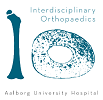Measuring of Walking with Wearable Sensors
Walking is a fundamental aspect of life. Walking affects everything, from circulation to digestion to metabolism to immunity. Most of us probably do not pay much attention to the way we walk, as our most basic method of transportation, however, walking problems can drastically change our life, influence our independence, and also cause significant health problems. The aim of many orthopaedic surgeries is to improve the walking ability.
As walking is such a familiar activity, it is difficult to define it without sounding abstruse. Walking has undoubtedly been observed ever since the time of the first men, but the systematic study of gait appears to date from the Renaissance when Leonardo da Vinci, Galileo and Newton all gave useful descriptions of walking. The history of gait analysis has shown a steady progression from early descriptive studies, through increasingly sophisticated methods of measurement, to mathematical analysis and mathematical modeling.
From the earliest days, there has been a hope that gait measurements would be useful in the management of patients with walking disorders, and recently a more serious attempt has been made to take gait analysis out of the research laboratory and into the clinic.
Gait analysis is truly a complex technology, and despite its accuracy, it is expensive in time and equipment. On top of that, only few steps in a path can be analyzed and it requires a skilled operator to perform it.

From patients’ perspective and for follow-up application, healthcare requires a novel approach to the movement analysis in order to make it user-friendly and designed under ergonomic constraints with nonintrusive technologies and to monitor for long time in natural conditions.
Wearable sensors are a possible solution to this problem. Their numerous positive characteristics, such as lightweight, small-size, low power consumption, portability, and low-cost, made them easy to use and not intrusive, so that it is possible to monitor subjects everywhere and without affecting the natural and normal executions of movements and activities.
Today, with the improvements in measurement and analytical techniques with wearable devices, the major limitation is not the ability to produce high-quality data but knowing how best to use these data for the benefit of patients. New challenges have been risen with these methods, and our research is focusing on these challenges. Clinical application of measurement parameters of walking, handling big data that will be produced, development of software algorithms to process data, and fusion methods to merge data from different body segment sensors, are among these challenges that our team are going to take on during this project. During this project we will benefit from the support from and collaboration with highly experienced specialists in gait analysis from physics, biomechanical and biomedical engineering departments of Aalborg University.
We believe that by tackling these issues, we would be able to provide a reliable, user-friendly, performance-based, closest to reality outcome measure for the walking in most of the patients, which can be applied conveniently in children and people with disabilities. This method would provide a real-time remote home-monitoring of the patients during their recovery period after surgeries. By which, a significant proportion of the unnecessary outpatient clinic visits would be avoided, and also the possibility of early detection of surgical complications would increase. Moreover, this method can provide patients with better feedbacks on their rehabilitation and encourage them pursue appropriate rehabilitation programs.


.png)

Arash Ghaffari

Arash Ghaffari
MD, Research Assistant
Project Manager
Orthopaedic Research Unit
Department of Orthopaedics
Aalborg University Hospital
a.ghaffari@rn.dk
Opdateret


